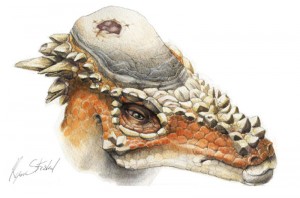Scientific publishing is entering a new era, with digital content becoming more and more important in a world where data is openly and freely shared. In palaeontology, we’re not being left behind. Along with this shift, 3D fossils are adding a new breadth to the field, both in a scientific and educational context. A great example is the British Geological Survey’s immense 3D fossil project.
I thought it might be a nice idea to draw attention to a new article by Stephan Lautenschlager of the University of Bristol, discussing the role that 3D palaeontology has to play in the current publishing world, as well as ways of implementing it. He’s been cool enough to make the article open access (see link at the bottom), so I’d recommend heading over to check it out.

